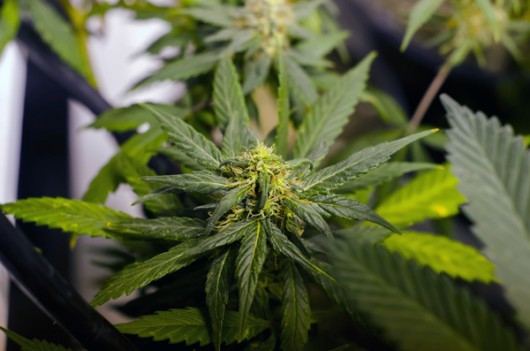The Alaska Municipal League met in Ketchikan last week, with representatives from as close as Saxman, and as far away as Barrow gathering in Alaska’s First City to talk about issues of shared interest throughout the state.
One of those issues is marijuana legalization, and one of the speakers was Cynthia Franklin, director of the Alcoholic Beverage Control Board and the newly formed Marijuana Control Board.
Audio PlayerOne thing Cynthia Franklin has learned about people who like marijuana: They really like it.

Cynthia Franklin, director of the Alcoholic Beverage Control Board and the newly formed Marijuana Control Board.
“Boy, there’s a lot of passion around this substance! A lot of people really, really, really, really, really, really love it. Love it a lot!” she said, laughing. “They are so passionate about it. I keep telling my staff, ‘I thought that marijuana people were supposed to be gentle. Why isn’t anyone relaxed when they talk to us?’”
Like everyone else in Alaska, though, those passionate fans are going to have to wait a while for retail marijuana stores to open. While Alaskans can now legally possess and grow cannabis for personal use, the state has until Nov. 24 to finish writing regulations for commercial marijuana operations – that includes cultivation, testing facilities and, eventually, pot shops.
Franklin said she is hyper aware of the looming November deadline, and she makes sure the board is aware, too.
“I preach the timeline. I’m like a timeline minister,” she said. “We are absolutely going to give our best effort to getting these regulations out in the timeframe set forth in the statute, so that we don’t throw you, the local government officials under the bus, so to speak. Under the marijuana bus.”
She’s referring to the penalty if the state misses that deadline. According to the ballot initiative approved by voters last year, if the state fails to draft regulations in that time frame, the task of issuing permits for commercial marijuana falls on local governments.
Franklin said that’s a great incentive for the state to not miss its deadline. But, even if regulations are ready by November 24th, permits won’t be issued until spring. And, the first ones won’t be for pot stores.
“One thing that we did learn from Washington is, don’t issue all the licenses at once,” she said. “Marijuana is a plant; you have to grow it. If you issue retail store licenses the same day that you issue marijuana cultivation licenses, you are putting quite a bit of pressure on your retail stores to find some marijuana to stock their shelves with, and it won’t be legally grown.”
Franklin said the first licenses issued most likely will be for grow operations, and for testing that legally grown commercial cannabis.
Speaking of testing, one AML attendee asked whether testing requirements will apply to places like Ketchikan, that are off the road system and only accessible by boat or plane – both those modes of travel are regulated by the federal government, and therefore are not legal for the transport of marijuana.
Franklin said yes, testing still will be required, but the board is aware of what she calls “the Alaska problem.” She said the regulations have been written with rural communities in mind.
“We truly believe that we will get adequate testing into the off-road communities that want to have marijuana establishment licenses,” she said. “We believe that operation and other operations will see an opportunity in putting a gas chromatography machine onto a boat and taking it into those communities to test their marijuana.”
Another audience member asked Franklin about the veracity of “horror stories” out of Colorado that were heard leading up to the vote legalizing marijuana in Alaska. Some of those stories involved children ingesting concentrated edible pot, and needing hospitalization.
Franklin said she met the chief physician at a children’s hospital in Denver, Colorado, during a conference. That doctor told her that yes, there was a jump in marijuana poisonings: from zero to 14.
“They said more children come to the emergency room for poisoning by Tide pods. You know what Tide pods are? They’re detergent made attractive and candy-like and apparently children love to eat them,” she said. “So, they have more admissions to the emergency room in Denver by poisoning by Tide pods than they do by marijuana.”
Franklin adds that most of the horror stories are from the first year after Colorado legalized marijuana. The problem was that legal medical marijuana dispensaries were the first places to offer legal recreational marijuana, and medical marijuana targets people who are accustomed to eating high doses of THC – the chemical in cannabis that creates the “high.”
“What they found was when they turned the recreational market loose with those products, havoc ensued,” she said. “So, they had to go back and rewrite their edible rules.”
Colorado now sets its single-serving size at 10 milligrams of THC, but recommends that first-time users cut that in half. So, Franklin said the Alaska rules will set the serving size at 5 milligrams, to encourage people dabbling with pot for the first time to start small and build from there.
During her visit to Ketchikan, Franklin also met with the local Marijuana Advisory Committee. She told the committee that her agency wants Alaska’s retail marijuana market to be successful, but that doesn’t mean they’re going to make it easy; there will be many rules to follow, similar to rules required for the alcohol industry.






